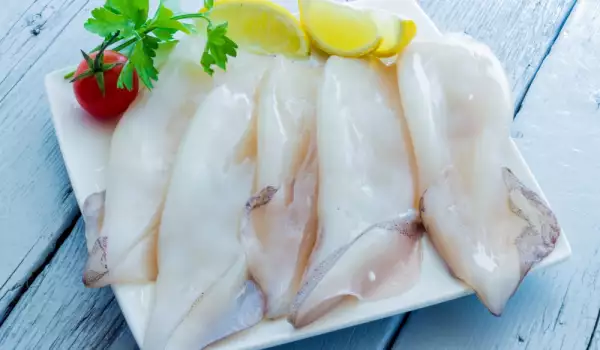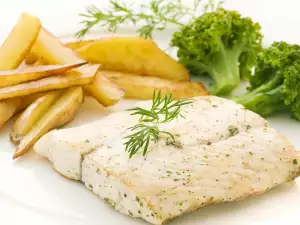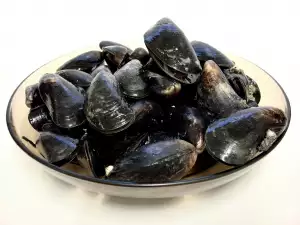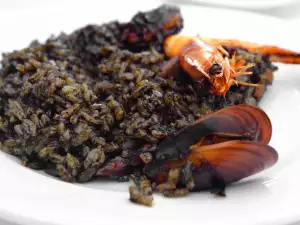Cuttlefish (Sepiida) are an order of cephalopod molluscs, highly valued by seafood fans. A cuttlefish's body varies in size. In some species, it is about 9 3/4″ (25 cm) long, while in others it can be over 19 3/4″ (50 cm). The weight of a mollusc can exceed 22 lb (10 kg). The body is elongated and dorsoventrally flattened. It can be decorated in a myriad of colors, with male specimen's decorations being more intricate.
Cuttlefish have the ability to change their body color; this occurs when the mollusc is trying to blend into its surrounding environment by adapting the same color tones. This makes it less visible to predators. Cuttlefish are distinguished by their tentacles. They are 10 in number and are arranged around their front end, around the mouth. One of the most widespread species is the Sepia officinalis, the common cuttlefish.
Characteristics of Cuttlefish
Cuttlefish inhabit coastal waters; they can be found at depths of 656 ft (200 m) below sea level. They prefer salted water, belonging to the subtropic and tropic climate zones. Cuttlefish are known for the oily substance they produce, called cuttlefish ink. This liquid is sprayed by the mollusc whenever it feels threatened and needs to protect itself. Using the ink, the cuttlefish manages to make a quick escape.
Cuttlefish can take on the role of a victim, as well as that of an attacker. It is a predator, whose diet includes all sorts of crustaceans and small fish. Cuttlefish have separate sexes. They reproduce through external fertilization. One of the tentacles takes on the functions of a copulatory organ. Cuttlefish swim relatively fast. Thanks to their tentacles, they can reach speeds of 19 mi (31 km) per hour.
Composition of Cuttlefish
Cuttlefish are a source of a wide range of beneficial nutrients, among which are potassium, sodium, calcium, iron, phosphorus, zinc, selenium and copper. Their bodies contain aspartic acid, glutamine, alanine, arginine, glycine, cysteine and others.
Cleaning Cuttlefish
Cuttlefish sold in large supermarkets are usually already cleaned. This makes it quite easier for chefs since all they have to do is thaw and wash them. If you happen upon an uncleaned cuttlefish however, you'll have to be patient since processing it is not one of the easiest and fastest tasks.
To start off, you'll have to find the cuttlefish bone, which is like a hard shell, located in the body of the mollusk. Pull it out carefully, the idea being to keep it intact. Then, pull out the head; the insides should come out with it. Very carefully remove the ink sac as well. Remove the skin of the cuttlefish by rubbing it until it starts to peel off.
Once the skin begins coming off, remove it entirely and throw it out. Wash the cleaned meat well and dry it. Now it is ready for further processing. Whenever cleaning a cuttlefish, it is always a good idea to wear gloves since the ink it produces can dye your hands.
Cooking Cuttlefish
Cuttlefish meat is nutritious and delicious. It does not require excessively long heat treatment. If cleaned and prepared properly, it becomes a temptation that is impossible to resist. When buying a cleaned and frozen cuttlefish, simply thaw it in cool water. Then, cut the meat up and use it in different dishes.

Cuttlefish meat is exceptionally popular in Mediterranean cuisine. It is eaten boiled, baked or fried. There is also a wide range of specialties with cuttlefish in Chinese and Japanese cuisine, where it is eaten smoked and marinated.
It combines with all types of vegetables and is seasoned with black pepper, marjoram, lemon juice, paprika, garlic. Of course, you can add other spices, depending on your personal taste. In many of the specialties, cuttlefish is combined with other seafood.
Benefits of Cuttlefish
The meat contains many beneficial substances which we need to take in order for our body to function correctly and for us to be resistant to viruses and stress. Cuttlefish are a source of vitamins А, В5, В6, В12 and С. According to scientists, in some aspects the meat of cuttlefish surpasses even veal and the meat of river fish. Consumption of cuttlefish improves metabolism and facilitates the removal of toxins.
Eating this seafood delicacy boosts the immune and cardiovascular systems. Cuttlefish ink is found in the makeup of certain homeopathic supplements that are prescribed for numerous diseases, including asthma, constipation, hemorrhoids, kidney problems, urinary tract problems, leukorrhea, dysmenorrhea, female sexual arousal disorder, infertility in women, skin problems, alopecia.
The substance that the cuttlefish produces has been known to humans for many centuries. For hundreds of years it has been used as an ink, as well as in paint, due to its brown color. The secretions of cuttlefish are used in the culinary arts to color rice, spaghetti and other food products. In some countries, they even find use for the cuttlefish bone. It contains a high quantity of limestone, thus finding use as a food additive in livestock breeding.















Comments